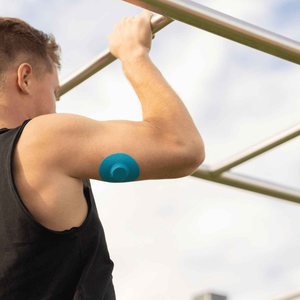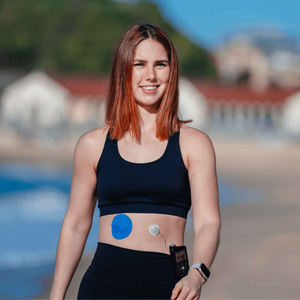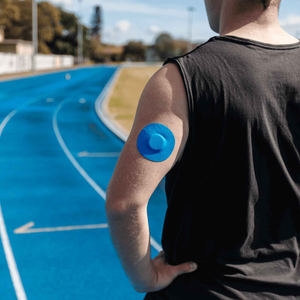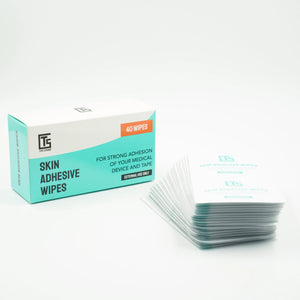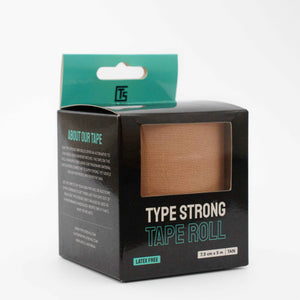Living with diabetes means adjusting not just to food and exercise, but also to the climate around you. Shifts between hot summers and cold winters can affect your blood sugar control and the way your CGM patch performs. Whether you are at home or travelling between climates, understanding these seasonal changes helps you stay ahead and avoid surprises.
Disclaimer: This article is for educational purposes only and should not replace medical advice. Always consult your healthcare team before making changes to your diabetes routine.
How temperature changes influence blood sugar
Temperature affects circulation, hydration, and activity levels - all important factors in diabetes management. Warm conditions typically increase blood flow, speeding insulin absorption. Cold conditions reduce circulation, which slows insulin uptake and can raise blood sugar.
Research shows a consistent seasonal pattern: HbA1c values tend to be lower in summer and higher in winter (Rodbard, 2009; Tseng et al., 2005). This highlights that weather is not only about comfort - it directly influences measurable outcomes in diabetes care.
Managing diabetes in hot weather
Hot weather can make blood sugar more unpredictable. You may find yourself experiencing quicker insulin action and more frequent glucose fluctuations. Common challenges include:
- Faster insulin absorption due to increased circulation.
- Dehydration leading to higher glucose levels.
- Patch security issues with sweat or swimming.

Practical steps include staying hydrated, carrying water during outdoor activity, and reinforcing your CGM with sweatproof CGM patches. Using a patch bundle allows you to stock up and mix patches and wipes for reliable summer use.
For more on warm-weather challenges, see why your CGM sensor needs extra protection in summer.
Managing diabetes in cold weather
In cold conditions, insulin often works more slowly due to reduced blood flow. People also tend to move less, which can increase glucose levels. At the same time, dry winter air and heavy clothing can interfere with patch adhesion.
To manage cold weather:
- Stay active where possible to support circulation.
- Use adhesive wipes to improve patch grip.
- Protect patch edges with a tape roll if clothing causes friction.
Studies confirm that HbA1c levels rise in winter months, showing the importance of taking extra care during cold seasons (Tseng et al., 2005).
Seasonal challenges for your CGM patch
Your CGM patch has to withstand more than daily wear - it faces climate extremes too. Heat, sweat, humidity, cold, and dryness can all affect adhesion. Proper skin prep is crucial. If you are new to this, explore our guide on how to prep your skin for patches.
Common seasonal effects on blood sugar and patch wear
|
Season/Climate |
Blood sugar impact |
Patch issues |
Practical tips |
|
Hot weather |
Faster insulin absorption, dehydration, more lows or spikes |
Sweat loosens adhesive, swimming causes lifting |
Stay hydrated, use sweatproof Dexcom G7 patches |
|
Cold weather |
Slower insulin action, possible highs, reduced activity |
Dry skin, clothing friction, patch lift |
Prep skin with wipes, reinforce edges with tape roll |
|
Humid climate |
Dehydration risk, sudden highs |
Moisture under patch |
Choose breathable patches, replace if skin feels damp |
|
Dry climate |
Itchy, flaky skin, variable absorption |
Patch irritation, peeling |
Rotate sites, use hypoallergenic options |

Traveller’s tips for different climates
If you travel often, you may encounter different climates in a single trip. That can mean sudden changes in blood sugar patterns and patch reliability. To prepare:
- Pack extra supplies – bring spare CGM patches and adhesive wipes.
- Plan for flights – cabin air is dry, which may affect patch adhesion. Carry a tape roll to reinforce edges mid-flight if needed.
- Adjust monitoring – check glucose more frequently during the first few days in a new climate.
- Hydrate regularly – especially important when moving to hot or humid conditions.
For more advice on being prepared, see what to pack for CGM patch care when travelling.
People also ask
Does hot weather affect blood sugar in diabetes?
Yes. Heat increases insulin absorption and sweating can lead to dehydration, both of which may destabilise blood sugar (Rodbard, 2009).
Why is my blood sugar higher in cold weather?
Cold conditions slow insulin absorption and often reduce activity, which can raise glucose. Studies confirm seasonal rises in HbA1c during winter (Tseng et al., 2005).
Can weather affect how well my CGM patch sticks?
Yes. Sweat, humidity, friction, and dryness all affect adhesion. Using season-appropriate CGM patches helps sensors stay secure.
Trusted resources for seasonal patch care
- How long a CGM patch should last
- Why athletes and active users always keep spare patches
-
Top 5 CGM patch issues and how to fix them
Managing diabetes through the seasons
Seasons may change, but your ability to stay in control doesn’t have to. By knowing how climate affects blood sugar and CGM patch wear, you can take small but powerful steps to keep your management steady.
With the right seasonal strategies and supportive products, you’ll be ready for summer heat, winter chill, or any travel destination in between.

References
Rodbard, D. (2009). Interpretation of continuous glucose monitoring data: Glycemic variability and quality of glycemic control. Diabetes Technology & Therapeutics, 11(S1), S-55–S-67. Available at: https://pubmed.ncbi.nlm.nih.gov/19213693/
Tseng, C.L., Brimacombe, M., Xie, M., Rajan, M., Wang, H., Kolassa, J., Crystal, S., Chen, T.C., Pogach, L. (2005). Seasonal patterns in monthly hemoglobin A1c values. American Journal of Epidemiology, 161(6), 565-574. Available at: https://pubmed.ncbi.nlm.nih.gov/15746472/
